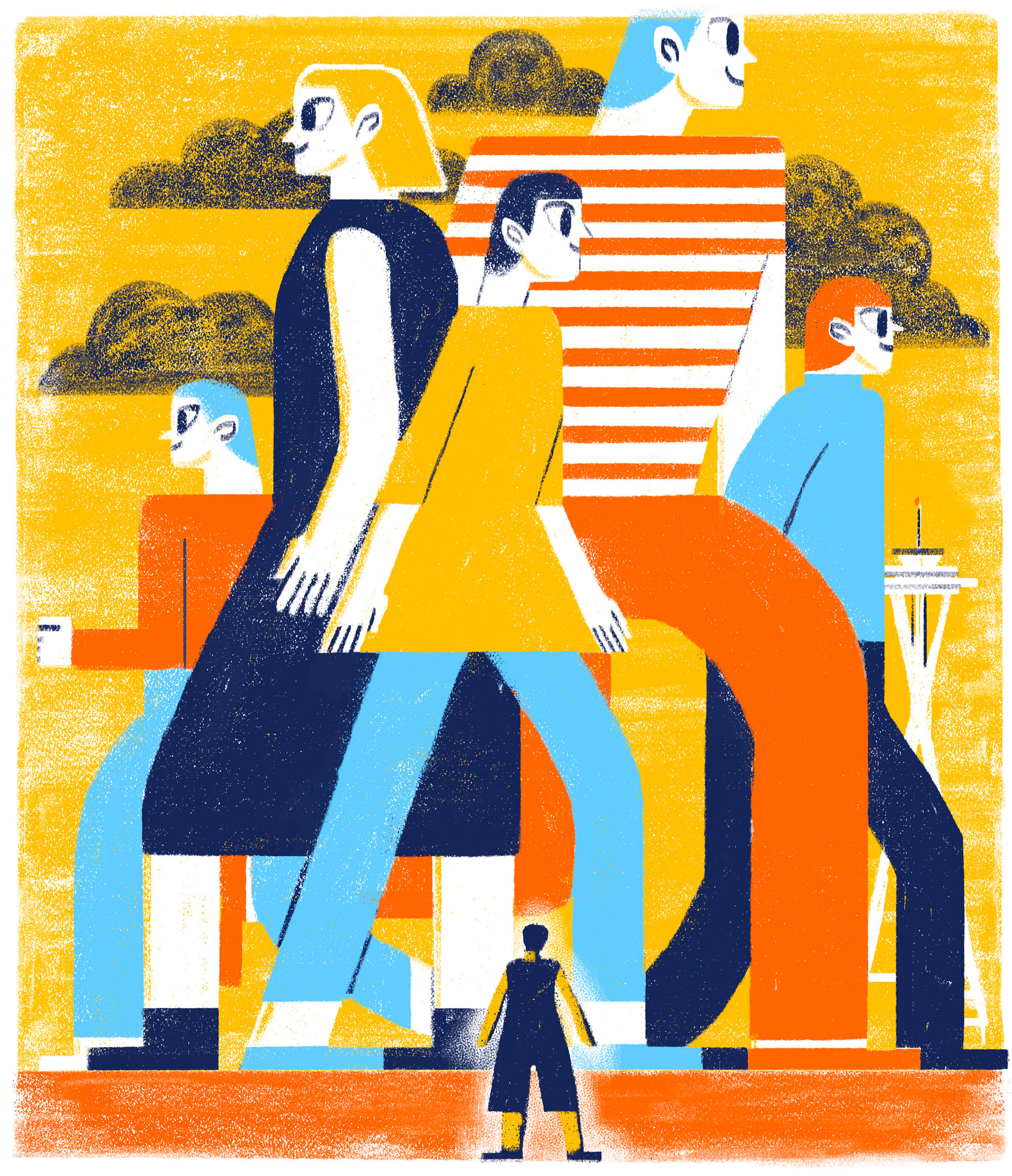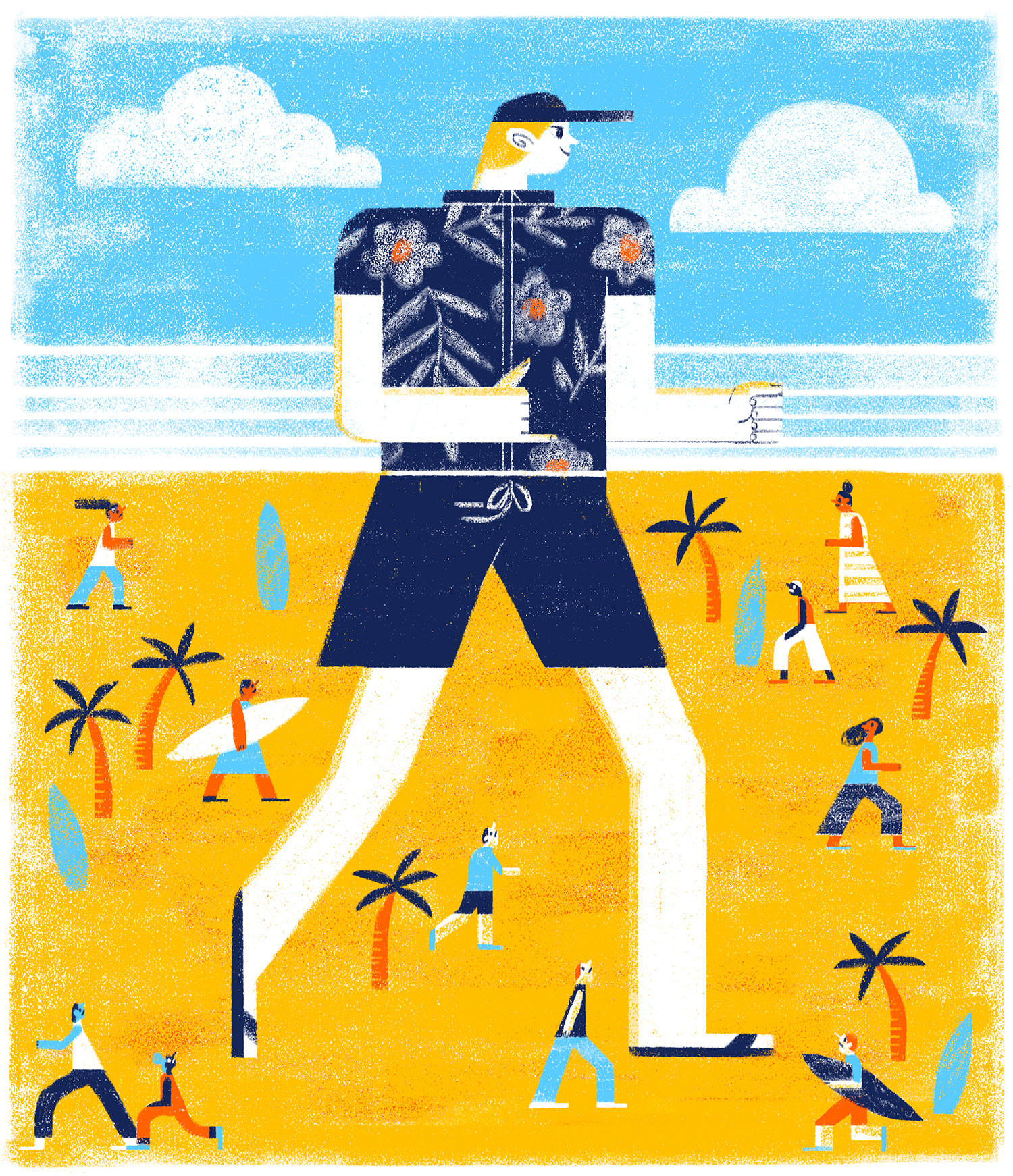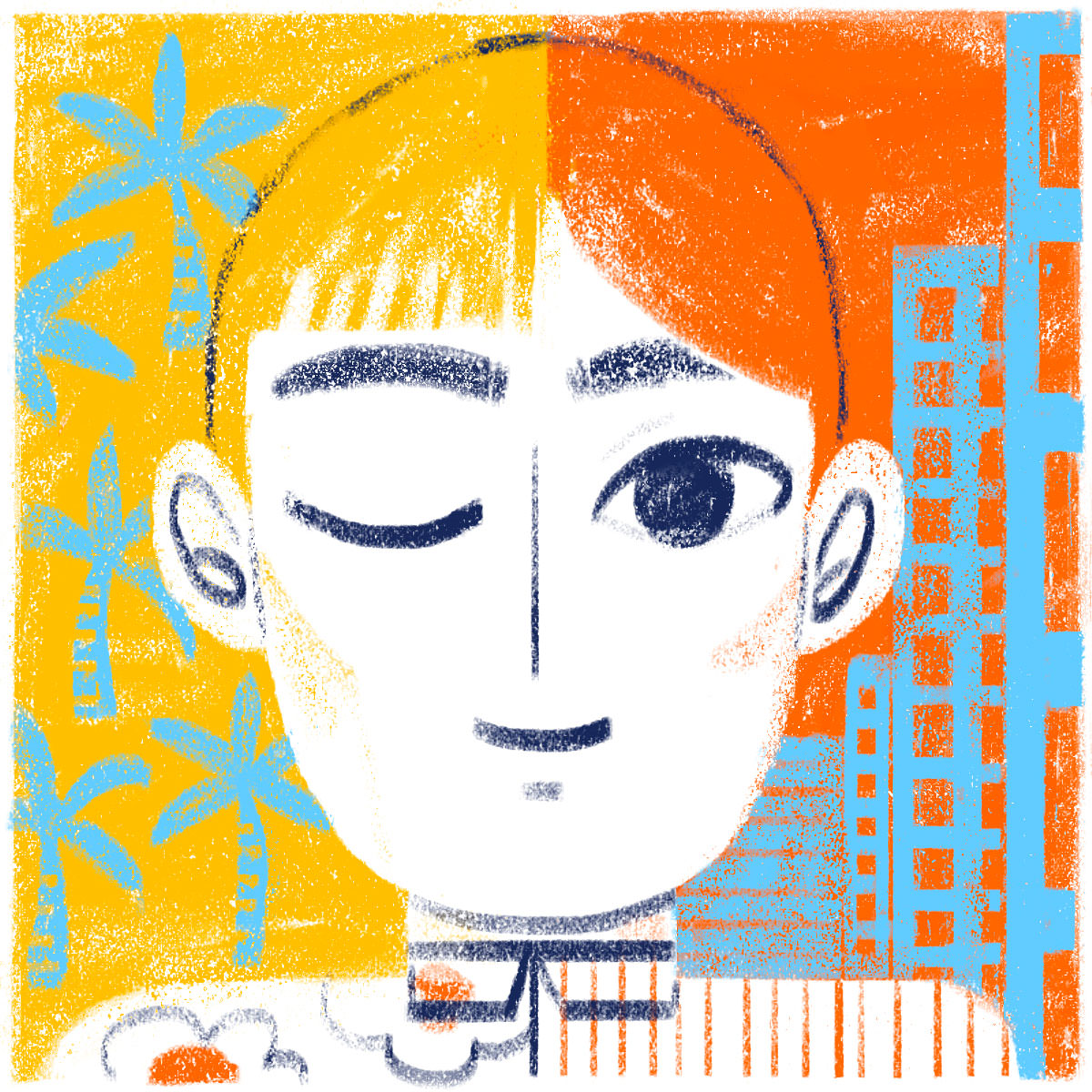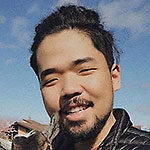
I grew up watching white people on TV. White families on popular sitcoms always interested me because of how different they were culturally from my own family culture. I often asked my mom why we couldn’t have casseroles for dinner or why we didn’t go on family vacations.
I had no idea what it meant to be white, but I knew white people seemed so confident. I wanted that. It seemed as if they got to do whatever they wanted to do. No matter if they were rich or poor, the world was for their consumption.
I’ve noticed a lot of entitlement when they’re looking at things that are not theirs. To white people, nothing is “not theirs” and this comes off as incredible confidence.
This confidence shows up in mundane settings when I see white people in grocery stores extending their arms to touch a person of color’s hair and quench their curiosity. It showed up when a white guy walked up to me in a bar and asked me, “What are you?” It showed up in the look in his eyes that his brain was itching with curiosity and it had to know the reasoning behind my ethnically ambiguous face. I see this confidence influence history as I learned about colonization that happened throughout the world. When you get a white person curious about something, that thing is at immediate risk for takeover.
I have experienced interacting with white confidence a lot over the last four years I’ve lived in Seattle. White people here make up over 77 percent of the population, and their dominance is felt in many ways. White people in Seattle aren’t afraid to tell you that they’re white, but the good kind, of course. But it isn’t a far jump from white confidence to white supremacy.
The confidence of white people is so apparent to me because I grew up in a place where things were the complete opposite. I grew up in a place where white people weren’t the most favorable people group. Where white people actually felt they had merit to claim there was prejudice against them.
I grew up in the 808 state, where we called white people Haoles.
• • •
I’m sure I had some friends growing up in Hawaiʻi who would consider themselves white, but I didn’t notice it. Who wanted to be known as a Haole, anyway? Not even the Haoles wanted to be Haole. All I knew about Haoles was that they lived on the Windward side or worked at the banks in downtown. I’ve often wondered why I saw more Haoles wearing Aloha shirts than local people. Or why their homes were always nicer than the homes of the locals.
But it was strange that every Haole I knew growing up always insisted that they weren’t Haole. They were always something else. They worked really hard on their pidgin and insisted that their great grandmother was Queen Liliʻuokalani. I remembered that every problem the locals of Hawaiʻi faced usually ended up being blamed on the Haoles.

You’d think that people would almost feel sorry for the Haoles living in Hawaiʻi. I’ve often heard claims that Hawaiʻi is proof that racism against white people exist.
But then you realize it’s not true. That as much as we mock the colonizer, they are still the ones who hold any real power on the islands. From the CEOs of local state banks, to elected officials writing policies that make space for million dollar developers, Mark Zuckerberg and the Haoles have complete access to the land that once belonged to the native Hawaiʻians. But all of this did not take away from the fact that Haoles did not want to be known as Haoles. They wanted to rid themselves of their “outsider” identity without relinquishing the power and privileges it came with.
It’s no surprise that they squirm whenever you try to hold white people accountable for the genocides committed by their people. Anti-racism work gets difficult when white people aren’t willing to call out their own whiteness — and everything it comes with it — let alone identify it.
• • •
When I eventually left Hawaiʻi and set foot on the mainland, I was not prepared to interact with a different kind of Haole. The Island Fever I developed in college really made me want to leave Hawaiʻi as soon as I graduated. I wanted to get out of Hawaiʻi so badly and experience what the mainland had to offer. I kept hearing that the mainland had more opportunity and that I needed to experience it. I had dreams of becoming a pastor and serving the least of these.
I decided that Seattle Pacific was the seminary I would attend to make that dream happen. What I didn’t predict was what it would feel like to move to a city consisting of mostly Haoles who were actually comfortable with being white. What I didn’t predict was how attending a mostly white seminary was going to affect my theological experience. What I didn’t predict was that I was moving to Seattle just three weeks after Michael Brown got murdered.
I met my first real white-identifying friend just under three years ago when I moved into my seminary dorm room. He convinced me that it was okay to wear shoes in the house and I convinced him that you had to wash rice before you cook it. I felt as if I was getting the inside scoop of what it meant to grow up white. So when Michael Brown died at the hands of a white man, I looked to my white friend on how white people react when an unjust murder happens because of one of their own.

What I saw was a struggling with whiteness. What I saw was denial of accountability. And then not much. No actions taken. What I saw was similar to the church I used to be a youth pastor at, about a week after I moved to Seattle. It was a mostly white, upper middle class, Presbyterian church. They didn’t know I was going to bring up the death of Michael Brown during the prayers of lament. They didn’t know I was going to call for the congregation to repent for their own white supremacy. I wouldn’t even make it past my first year serving at that church. The leadership believed it would be best that we part ways.
And I didn’t know that when white people are faced with their own people’s crimes against humanity, similar to the Haoles I grew up with, white people will always try their absolute best to resist accountability and claim “I’m not that person”, despite their invested ties to whiteness.
I can understand why people get passionate about their own heritage. I couldn’t be more prouder of my mother’s Korean immigrant background and my father’s African background. The stories and the nuances found in both of their stories can’t be categorized as simply good or bad. The beauty is in the twists and turns of everything that happened that formed them to be who they are.
This is why I can’t understand how white people can be so confident of what they believe to be their heritage but own absolutely nothing of their own history. No sense of ownership.
I have learned that the most confident people in the world can also be the most fragile. But I find it important to push white people to stay in that place of fragility and learn why being accountable for their people is a must if we are to start having real conversations with each other on how to end white supremacy. Perhaps instead of confidence, white people can consider being known for a different quality: an ability to sit and stay in their own tension.
I wish I could clearly articulate instructions for white people follow. But I can’t. I don’t think anyone should have to. At least not until white people start learning what it means to be white.

Dae Shik Kim Hawkins Jr. currently lives in Seattle, WA. There he is involved with many advocacy coalitions and community organizing groups. Dae Shik is a freelance writer that covers topics around religion, race, and justice. Some publications that have published his work include Sojourners, Inheritance Magazine, The Establishment, and The Nation.

Kimberlie Clinthorne-Wong is an illustrator and ceramic designer based in Hawaii. She is the cofounder of the collaborative ceramics studio, Two Hold Studios, LLC. Kimberlie’s work can be found at www.kimberliewong.com and on Instagram @kimiewng.